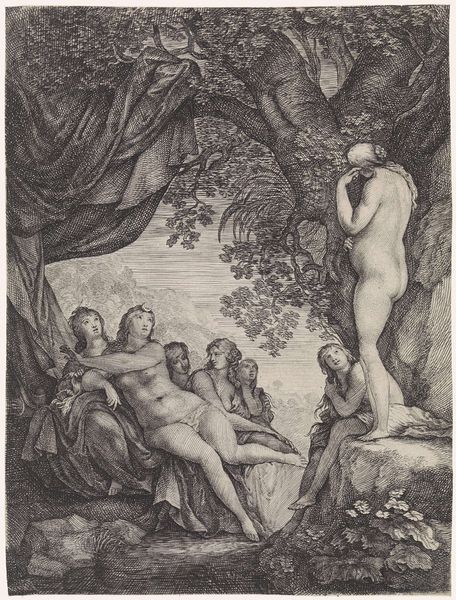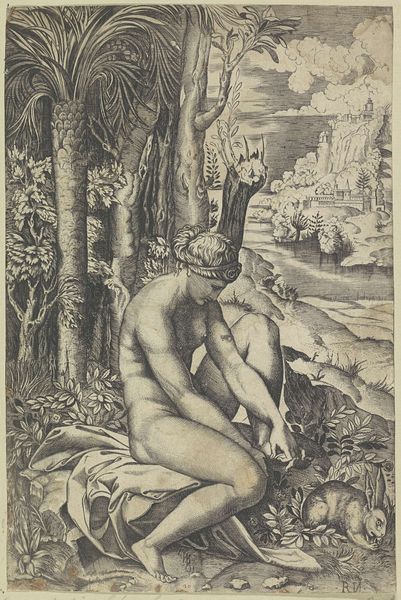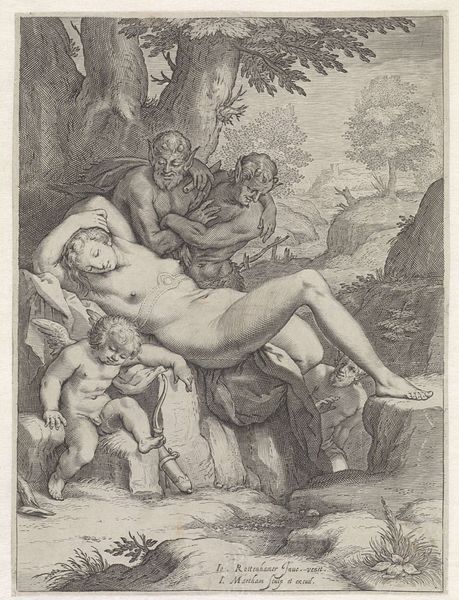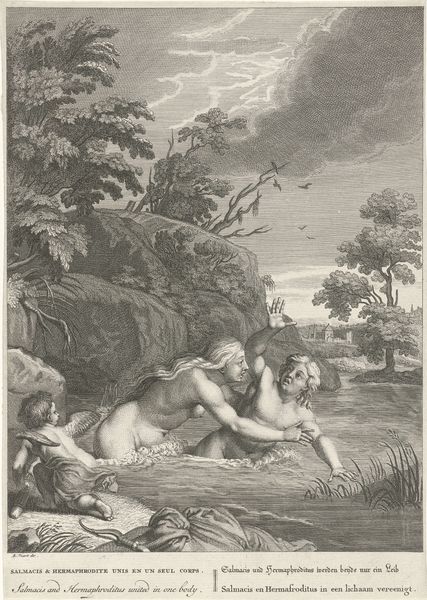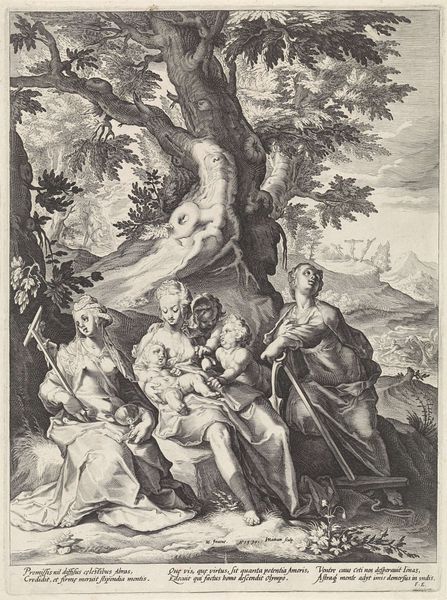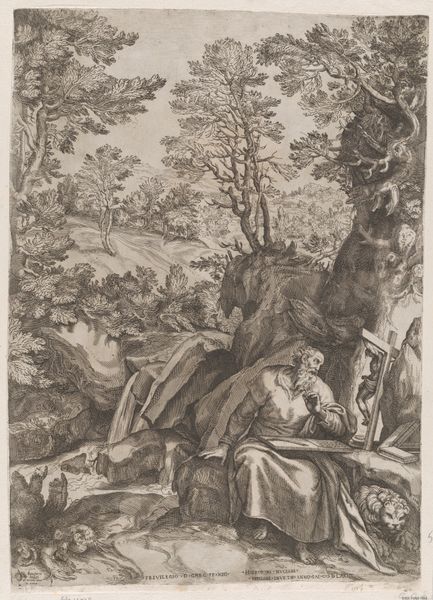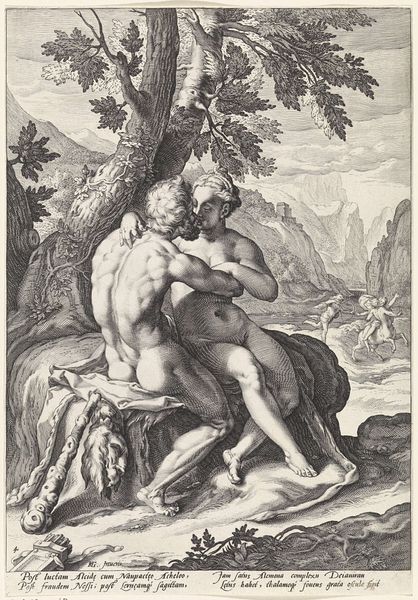
engraving
#
allegory
#
baroque
#
figuration
#
nude
#
engraving
Dimensions: width 240 mm, height 302 mm
Copyright: Rijks Museum: Open Domain
Editor: This is "Slapende Venus en Cupido," made sometime between 1581 and 1612 by Theodoor Galle. It’s an engraving and currently held at the Rijksmuseum. The composition has such a languid feel to it. What symbolism do you see at play here? Curator: Note how Venus, the epitome of love, is shown asleep. Consider the symbols usually associated with her: the dove, the roses, the myrtle. Their absence suggests a pause, a moment of potential. Then we have Cupid also sleeping on her. He often represents desire and attraction, dormant in this instance. Their shared slumber, could signify love's temporary surrender to peace. But is it truly peaceful, or more of a prelude? Editor: A prelude to what? To a new phase of passion? Curator: Perhaps. Or consider how they are both posed near the tree. Is the tree only a backdrop? In several cultures, trees are the center for rituals connecting humans to the deity that inhabits the location. Is Venus representing love as something eternal that is one with Nature, at par with other goddesses? Editor: That's a fascinating viewpoint! It almost seems to contrast with the Baroque style which focuses so much on fleeting emotional displays. Curator: Exactly. By juxtaposing the temporary – the nap, the surrender – with something seemingly perpetual such as natural settings, Galle makes us think. How do you think cultural context has contributed to that paradox? Editor: I hadn’t considered the possible contradictions within this artwork. Looking closely, the piece has a complexity I completely missed initially! Curator: And this is the power of images - they speak across centuries, carrying layers of meaning that reveal themselves in unexpected ways.
Comments
No comments
Be the first to comment and join the conversation on the ultimate creative platform.



